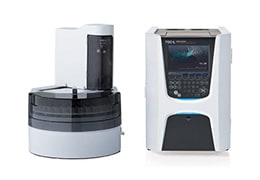
TOC-L Series
・High Suspension Kit to improve precision of injection. ・External Sparging Kit to reduce analysis time.
An important parameter for the environmental status estimation of terrestrial and aquatic ecosystem is the total organic carbon (TOC) content in soils and sediments. The soil and sediments organic carbon are mainly derived by decomposition of the plants and animals or plankton or anthropogenic sources such as chemical contaminants, fertilizers or organic rich waste. The organic carbon concentrations in sediments and soils also correlate very well with organic contaminants and for this reason can be used to estimate the level of contamination and toxicity. The established regulations to determine TOC in solid samples is known as the Solid Sample Combustion (SSC) method. Here, a weighed solid sample is combusted in a stream of air or oxygen to produce carbon dioxide which is then detected and quantified using a calibration curve. The Shimadzu TOC solid sample measurement system has been used to evaluate the differences in the total carbon content in soil and compost without extraction or other pretreatment procedures. However, the inhomogeneity of the soils has a direct effect on the results as each weighed solid sample can only be combusted once. This method is also labour-intensive and time-consuming. Another established regulation is the Suspension (SP) method where the soil sample is suspended in diluted acid solution to break down carbonate compounds and homogenized to produce small soil particles. This method is simpler and enables the possibility of statistically reliable multiple injections within a single sample batch. This application news compares the results obtained using both the SSC and SP methods.
March 17, 2022 GMT
Some products may be updated to newer models